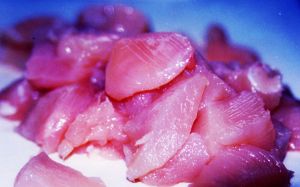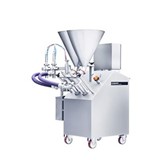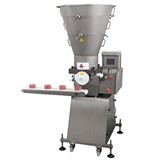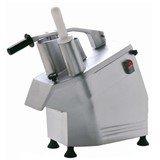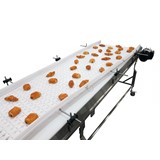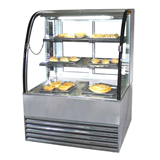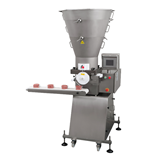The University of Nottingham is to play a major role in a cross disciplinary nationwide study to find out more about the organism that causes over 300,000 cases of food poisoning every year in the UK, and how best to control it.
Campylobacter is the leading cause of food poisoning in the UK, and Nottingham is leading three of twelve projects looking at Campylobacter in the food chain - from field to plate, and inevitably there will be lessons that will have application for Australian farmers and food processors.
The most common source of Campylobacter infection in humans is poultry meat - either through consumption of undercooked product or through cross contamination in the kitchen environment. Whilst good hygiene and thorough cooking can effectively prevent infection, there are still a high number of cases in both the UK and Australia, with the cost to the economy estimated to run into the hundreds of millions.
Ian Connerton, Northern Foods Professor of Food Safety in the School of Biosciences, will investigate the use of bacteriophage - a naturally occurring virus that kills specific bacteria - as a sustainable form of biocontrol against Campylobacter.
The aim is to prevent Campylobacter from colonising and contaminating poultry and poultry meat. Bacteriophage are quite specific and so will only affect Campylobacter and not other, "friendly" bacteria.
They are also very common in the environment, which means that humans encounter them on a daily basis, including on fresh produce. The team will use laboratory work and computer modelling to build a comprehensive understanding of how Campylobacter and bacteriophage interact in poultry from farm to supermarket shelf.
Professor Connerton will also head a second project which will survey Campylobacter present throughout the production pipeline. The team will sample all stages of broiler chicken production from farm to retail in order to record the levels of contamination and types of Campylobacter present.
This will enable development of a mathematical model that can be used to assess the effects of implementing multiple interventions and how useful these might be in reducing human exposure to the bacteria.
"There is a need to find sustainable approaches to control campylobacters contaminating poultry meat. We are examining the feasibility of biological means, and with industry how commercial processing measures can be optimised to improve food safety for the consumer," he said.
Tackling food poisoning bacteria can improve food safety and also reduce wastage and losses via fewer quality control failures and increased shelf life.
The poultry industry in the UK is worth 4 billion GBP at the retail level and employs 35,000 people. This science will serve to underpin strength in this industry in the UK and also globally where it is estimated to be worth over 85 billion GBP.
Campylobacter infection or contamination can potentially occur at any point during poultry production and food processing.
The aims of this group of projects include identification of the key sources of the initial infection on farms; the common points of contamination; and "weak spots" in the pipeline of infection where there is a high chance of eliminating bacteria from the food chain.
Some of the projects look at the potential to control Campylobacter infection on farms. By developing and/or testing new and existing biocontrol methods they hope to provide advice for new policy and practice.

